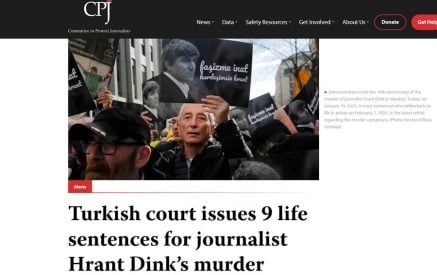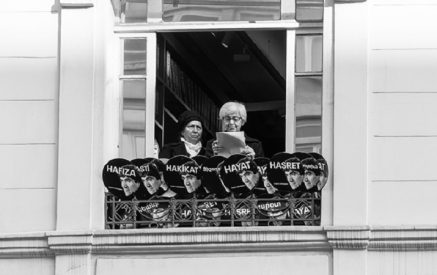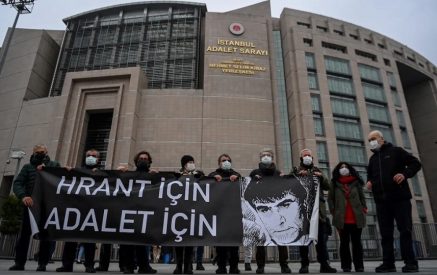Translator, screenwriter and writer Hambardzum Hambardzumyan was only 23 when he was awarded with President Prize back in 2007 for a series of stories “Katya”, “The Return” and “Eight Graders”. As he mentions “the Prize was very honorable for me because that year Hrant Dink was also awarded with President Prize, also among other awardees was my academic advisor Ruben Hovsepyan. In a word, Ruben Hovsepyan got the Prize in general category of Literature, while I, being his student, got a President Youth Prize in the same category. There was something significant in that”.
Hambardzumyan sincerely mentioned “Awards are good, especially when they are accompanied by a great monetary prize. I remember I received the Youth Prize that was something like 2500 USD. I spent most part of the sum to buy a truck for my father, as back then my father was employed at a freight forwarding company. Sometimes I would also work as a loader and I thought it would be great if we had our own truck.
Back then “Katya” was perceived in quite a controversial manner among Armenian society because of the intimate scenes described. There were extreme ratings, one called it erotic literature, others aesthetics, but the thing that this very short story brought in a new standard of high fiction in contemporary literature, was definite.
“After the Prize was conferred to me, I joined the army. Then I came back and got to read all comments for “Katya”. A girl had called it porn. I think had this story been published now, we would not face such feedback, because afterwards, even those writers who labeled this as “porn”, also started their journey in writing in the same genre. In fact, “Katya” is an example of Armenian trafficking. It is based on real facts, well at the same time using artistic emphases”, Hambardzumyan says, meanwhile admitting that there is no literature with “intimate scenes” in Armenia. “I will be more than happy if someone starts writing erotic literature, maybe I can even start writing myself, but for the time being, I think there is no demand in the market. Today’s bestsellers are those which have become popular for having high values. When you want to adapt literature to the market demand and then sell it, it is not well perceived by the readers. I was a young writer, with only two stories in my background, yet I was known by almost all the writers, because my stories had close connection with the traditional literature – Bakunts, Hrant Matevosyan, Stepan Zoryan – in a word my stories encapsulated the lives of people in small neighbourhoods, small communities. Shortly after, as I started incorporating nuances into my style, switching to topics on social, political as well as topics of current events, recreating the genre of “Wallpaper”, I realized it was not in demand as the readers had other expectations from me”.
Hambardzum Hambardzumyan’s heroes range from neighbourhood guys, who like to gather under a Mulberry tree in a “squat” position (typical sitting habit for some guys who spend leisure time in the backyard) playing belote (board game) to intellectuals, from women who are fond of soap operas, to political activists. He says our market is small, your book becomes a “bestseller”, like it was in case of his “Korean Delicate Dish”. A book makes its way to the list of bestsellers, but as you get to see the figures of published copies, it immediately acquires a satirical hue. “The term bestseller is really funny in Armenian reality, because in comparison, a book can be sold in 300 more copies and be considered as a bestseller for this reason”.
Read also
In his story “That Night” Hambardzumyan describes the tragedy of an underage child, the desperateness, he writes “That night my beaten, broken father lay in his own blood and petrol threatening he would ignite himself. That night my mother and I sat at our doorway and refused to get into the house. My mother cried, while I had no idea what to do”.
If back then the young writer doubted what to do, how to spend the monetary award he received, now he has a clear dream, if the prize regulations changed magically and if only he could apply once again, this time in general categories (there are 8 general categories of President Prize, and 4 categories for Youth Prize), the sum would serve as grounds for him to purchase a house. The writer is confident age plays no role in arts, be it a Youth Prize or not, it makes the writer to strive forward, create and achieve more.
Hripsime Jebejyan
The President Prize to the Republic of Armenia is initiated and funded by the Boghossian Foundation (Belgium-Switzerland). The Award Ceremony is organized by “Hayastan” All-Armenian Fund. The prizes are conferred by the RA President and the representatives of the Boghossian Foundation annually in May.
“Aravot” daily



























































